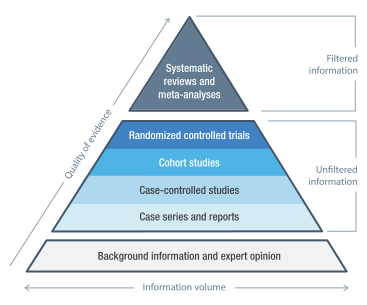Want the best results? Keep up with the latest science!
New research is being done, and discoveries are made all the time. Learning and adapting to further information can help you achieve your goals faster and more efficiently. But how do you know which studies are helpful for you and which are too good to be true?
In the search for new information on training and diet, follow our top three strategies to separate fitness facts from fiction.
Science does not change overnight (usually)
If a new study comes out with a piece of data that’s completely unprecedented, this does not mean that it cancels out all previous studies. No matter how new a study—or how old the previous studies—is, the newer study does not get any “bonus points” just for being new. Many of the best studies on carbohydrate metabolism were done in the late 70’s, and so far, they’ve stood the test of time!
A single study does not change a whole industry
Not only does a new study not get any bonus points just for being new, but a single study also actually proves very little. A collection of all the studies on a topic, known as a comprehensive review, provides the most precise facts. A new study may suggest an interesting new area of research, but it takes dozens of studies to show a time-tested, conclusive relationship.
A comprehensive review follows the previous review every 5-10 years. That’s enough time for multiple new studies on a subject and potentially either add data to support the old conclusions or suggest new ones. New reviews are better than older reviews, but even older reviews are better than any new study.

If multiple comprehensive reviews are available, read them ALL!
In mature fields, multiple comprehensive reviews are often available on various topics. Considering numerous reviews (when available) is the best way to form the clearest understanding of the currently accepted science.
For instance, the relationship between saturated fat intake and cardiovascular disease has been studied for decades, with at least 14 comprehensive reviews published. These reviews share many of the same studies but not all. So which review is the right one? The newest?
All reviews must be considered. Just like all studies considered together are better than just one study, all reviews taken together are likely better than one single review.
When we look at the saturated fat and disease connection, most reviews conclude that increased saturated fat in the diet likely contributes to a higher risk of cardiovascular disease. Several other reviews were less conclusive, and one review proposed that saturated fats carry no additional disease risk. Because the latter review is also one of the latest, people used it to justify the “bacon craze” of 2012. They were missing the ten or so other reviews that said otherwise!
The path to enlightenment is long
In your quest for the most up-to-date knowledge, use new studies as suggestions (rather than definite truths), look at the comprehensive reviews, and if needed, check out ALL the reviews done to date. If you can’t analyze all the reviews, a textbook collects all the reviews together and communicates the most general and widely accepted conclusion on a topic.
Yes, we know that’s a lot of work —fortunately, we’ve done a lot of this work for you and boiled the critical science down to easy-to-digest ebooks. And if you want to go the extra mile after reading some of our books but are not ready to dive directly into the research yet, you can join our RP Nutrition Certification!
Keep educating yourself and know that by doing this work, you can be sure you’re doing the right thing—or at least not doing the wrong thing.
…OR you can be one of those people that blows new studies totally out of proportion, changes their training, and then embarrassingly changes their training back when it’s made clear the study was not representative of reality.
If it sounds too good to be true, it probably is!